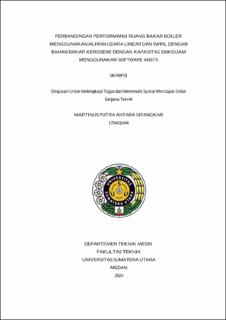| dc.description.abstract | According to projections from the World Energy Agency (IEA), by 2030 world energy demand will increase by 45% or an average increase of 1.6% per year. Losses due to the transfer of energy accompanying heat and work can then be analyzed with the aim of calculating the maximum working potential of a system to reach equilibrium with environmental conditions and to identify the occurrence of energy destruction. Based on previous research, the results of energy analysis of the power plant system can be said that the boiler is one of the main factors causing actual energy loss. This is because the boiler performance efficiency decreases due to excessive heat loss during the process. Energy conservation, which is the use of energy efficiently and rationally without reducing the use of energy that is really needed, needs to be applied at all stages of utilization, using technology that is efficient and cultivate an energy-saving lifestyle starting from the use of energy resources to final utilization. Energy conservation has huge potential savings opportunities across all sectors. The main components in the power plant system consist of pumps, turbines, condensers and boilers. However, in this study only 3 discussed the components contained in the boiler. A boiler or steam boiler is a device in the form of a closed tank/drum/vessel made of steel whose function is to convert water into steam. It can be said to be a means of transferring heat produced through burning fuel (either in solid, liquid or gas form), thus Water can turn into steam which functions for the production process. The boiler image that has been designed using Solidworks, 2020 will be updated on the object to facilitate the simulation process, parts that have less influence on the boiler simulation will be suppressed, such as the Pressure Gauge, Boiler Leg, Valve, where the aim is to reduce the number of meshes so that the process can run smoothly. | en_US |


